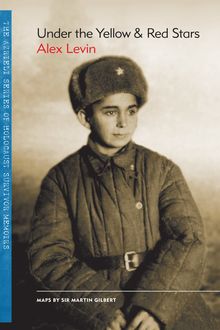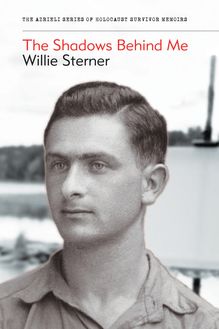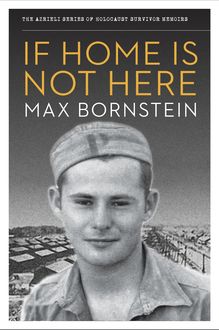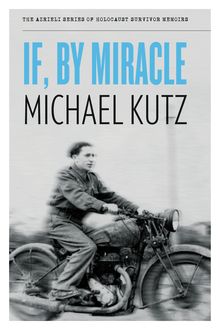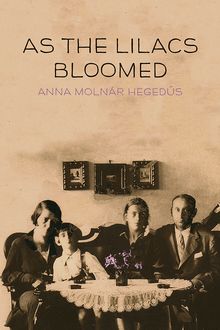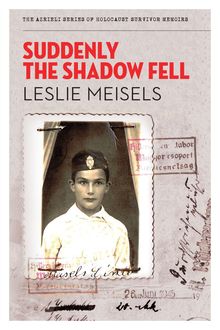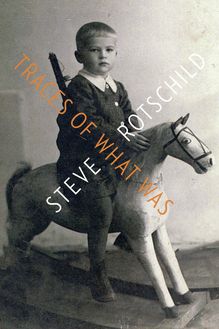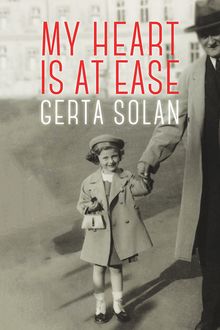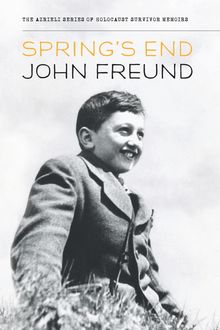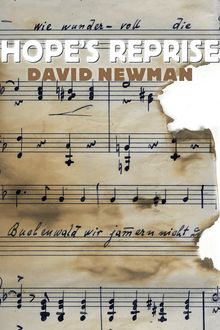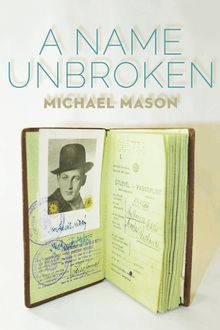-
 Univers
Univers
-
 Ebooks
Ebooks
-
 Livres audio
Livres audio
-
 Presse
Presse
-
 Podcasts
Podcasts
-
 BD
BD
-
 Documents
Documents
-
- Cours
- Révisions
- Ressources pédagogiques
- Sciences de l’éducation
- Manuels scolaires
- Langues
- Travaux de classe
- Annales de BEP
- Etudes supérieures
- Maternelle et primaire
- Fiches de lecture
- Orientation scolaire
- Méthodologie
- Corrigés de devoir
- Annales d’examens et concours
- Annales du bac
- Annales du brevet
- Rapports de stage
La lecture à portée de main
Vous pourrez modifier la taille du texte de cet ouvrage
Découvre YouScribe en t'inscrivant gratuitement
Je m'inscrisDécouvre YouScribe en t'inscrivant gratuitement
Je m'inscrisEn savoir plus
Vous pourrez modifier la taille du texte de cet ouvrage
En savoir plus

Description
Sujets
Informations
| Publié par | Azrieli Foundation |
| Date de parution | 01 septembre 2013 |
| Nombre de lectures | 1 |
| EAN13 | 9781897470770 |
| Langue | English |
| Poids de l'ouvrage | 1 Mo |
Informations légales : prix de location à la page 0,0300€. Cette information est donnée uniquement à titre indicatif conformément à la législation en vigueur.
Extrait
Vanished Boyhood
George Stern
The Azrieli Series of Holocaust Survivor Memoirs
INTERNATIONAL ADVISORY COUNCIL
Doris Bergen, Chancellor Rose and Ray Wolfe Chair in Holocaust Studies, University of Toronto
Sara R. Horowitz, Director of the Israel and Golda Koschitzky Centre for Jewish Studies, York University
Nechama Tec, Professor Emerita of Sociology, University of Connecticut
Avner Shalev, Chairman of the Yad Vashem Directorate, Jerusalem
Naomi Azrieli, Publisher
Andrea Knight, Managing Editor
Jody Spiegel, Program Director
Arielle Berger, Editor
Elizabeth Lasserre, Senior Editor, French-Language Editions
Aurélien Bonin, Assistant Editor / Researcher, French-Language Editions
Elin Beaumont, Educational Outreach and Communications
Tim MacKay, Social Media and Marketing
Susan Roitman, Executive Coordinator (Toronto)
Mary Mellas, Executive Coordinator (Montreal)
Mark Goldstein, Art Director
Nicolas Côté, Layout, French-Language Editions
François Blanc, Cartographer
Contents
The Azrieli Series of Holocaust Survivor Memoirs
Series Preface: In their own words...
About the Glossary
Introduction
Foreword
Dedication
Epigraph
The Early Years
Life Changes Overnight
The Siege of Budapest
The Aftermath
Aliyah!
Judit
Waves of Change
Brazil
Journey to North America
Epilogue
Glossary
Photographs
Copyright
About the Azrieli Foundation
Also Available
Series Preface: In their own words...
In telling these stories, the writers have liberated themselves. For so many years we did not speak about it, even when we became free people living in a free society. Now, when at last we are writing about what happened to us in this dark period of history, knowing that our stories will be read and live on, it is possible for us to feel truly free. These unique historical documents put a face on what was lost, and allow readers to grasp the enormity of what happened to six million Jews – one story at a time.
David J. Azrieli , C.M., C.Q., M.Arch
Holocaust survivor and founder, The Azrieli Foundation
Since the end of World War II , over 30,000 Jewish Holocaust survivors have immigrated to Canada. Who they are, where they came from, what they experienced and how they built new lives for themselves and their families are important parts of our Canadian heritage. The Azrieli Foundation’s Holocaust Survivor Memoirs Program was established to preserve and share the memoirs written by those who survived the twentieth-century Nazi genocide of the Jews of Europe and later made their way to Canada. The program is guided by the conviction that each survivor of the Holocaust has a remarkable story to tell, and that such stories play an important role in education about tolerance and diversity.
Millions of individual stories are lost to us forever. By preserving the stories written by survivors and making them widely available to a broad audience, the Azrieli Foundation’s Holocaust Survivor Memoirs Program seeks to sustain the memory of all those who perished at the hands of hatred, abetted by indifference and apathy. The personal accounts of those who survived against all odds are as different as the people who wrote them, but all demonstrate the courage, strength, wit and luck that it took to prevail and survive in such terrible adversity. The memoirs are also moving tributes to people – strangers and friends – who risked their lives to help others, and who, through acts of kindness and decency in the darkest of moments, frequently helped the persecuted maintain faith in humanity and courage to endure. These accounts offer inspiration to all, as does the survivors’ desire to share their experiences so that new generations can learn from them.
The Holocaust Survivor Memoirs Program collects, archives and publishes these distinctive records and the print editions are available free of charge to libraries, educational institutions and Holocaust-education programs across Canada, and at Azrieli Foundation educational events. They are also available for sale to the general public at bookstores.
The Azrieli Foundation would like to express appreciation to the following people for their invaluable efforts in producing this book: Sherry Dodson (Maracle Press), Sir Martin Gilbert, Farla Klaiman, David Sherman, Mia Spiro, Keaton Taylor, and Margie Wolfe and Emma Rodgers of Second Story Press.
About the Glossary
The following memoir contains a number of terms, concepts and historical references that may be unfamiliar to the reader. For information on major organizations; significant historical events and people; geographical locations; religious and cultural terms; and foreign-language words and expressions that will help give context and background to the events described in the text, please see the Glossary .
Introduction
Barely a month before George Stern’s highly anticipated bar mitzvah in April 1944, the Nazis invaded Hungary and closed the synagogue where it was to be held. As Stern writes in his brave and poignant memoir, family and Jewish traditions were a central part of his happy childhood surrounded by his close-knit Orthodox Jewish family. Born György Stern in Újpest (New Pest), a largely Jewish suburb of Budapest where his father ran a wine business with his two brothers, he grew up next door to his paternal grandparents and opens his memoir with affectionate memories of extended family celebrations of Passover. Once that life is wiped away by the terrors of World War II , that lost bar mitzvah stayed with George Stern as the symbol of his vanished boyhood.
The Hungary that George Stern was born into in 1931 was still reeling from the outcome of World War I , the dissolution of the Austro-Hungarian Empire and the harsh territorial settlement imposed on Hungary at Versailles by the 1920 Treaty of Trianon. Viewed as nothing less than a catastrophe and known by Hungarians even today as the “Trianon trauma,” the settlement triggered a shift away from the liberalism and tolerance that had characterized Hungary for a century before the war.
Throughout the nineteenth century, Hungary had followed a general trend toward reform and liberalism exemplified in part by the largely failed Revolutions of 1848 that swept through Western and Central Europe. Despite the collapse of the Hungarian Revolution of 1848, the reforms that followed were unparalleled elsewhere in east-central Europe. Most significant was the Austro-Hungarian Compromise of 1867, which peacefully negotiated Hungary’s status as a sovereign kingdom no longer subject to the Austrian Empire and brought new rights of citizenship to the myriad national groups within the former empire.
Among the national, ethnic and religious groups to benefit from these nineteenth-century trends toward liberalism were Hungary’s Jewish population, and Jewish assimilation was far more rapid in Hungary than in any other states of Central and Eastern Europe. While Újpest , where George and his family lived, was founded in 1835 by Jewish families who could not obtain licenses to operate their businesses in the capital, by 1895, when the Law of Reception was passed, Judaism was included on an equal basis among the recognized religions of Hungary. By the end of the nineteenth century, Jews no longer had to be identified in national statistics as a separate ethnic group, and the aim of Hungarian liberalism and of the liberal nobility who governed until 1918 was the “complete civic and political equality of Jews with the Christian population as proclaimed in paragraph 1 of the Emancipation Law.” 1
Jews have lived in the Carpathian Basin with few interruptions for one thousand years, but mass immigration only began in the late eighteenth century. From a population of 80,000 in 1787, the number of Jews tripled by 1840. During the Revolution of 1848, in which Hungarians rose up against their Habsburg rulers, the growing Jewish population in Hungary identified with the national cause of the Magyars, the dominant ethnic group, the Hungarian language and, to a great extent, Hungarian culture. In the years following the Austro-Hungarian Compromise of 1867 that led to full civil and political rights for Jews, the Jewish population doubled to about half a million and then reached 911,000 in 1910. At this time, Jews made up 5 per cent of Hungary’s population and about 7 per cent of Magyars belonged to the Jewish faith. 2 Significantly, 705,000 of them – more than 75 per cent – declared Hungarian to be their mother tongue.
Despite their relatively small proportion of the population, by 1910 almost half the lawyers and medical practitioners, more than 40 per cent of the journalists, more than 30 per cent of the engineers, and 25 per cent of artists and writers in Hungary were Jews. As the city of Budapest grew and became a commercial and cultural centre, it attracted Jewish merchants, traders and, later, skilled workers and intellectuals to the metropolis and they in turn contributed to the flourishing of the Hungarian capital. They were instrumental in economic progress and the implementation of industrialization. The cultural, scientific, financial and professional influence of the Jews was in no small measure responsible for Budapest becoming the greatest financial and media centre of Europe east of Vienna.
The end of World War I and the breakup of the Austro-Hungarian Empire marked a turning point for all Hungarians, with especially dire consequences fo
-
 Univers
Univers
-
 Ebooks
Ebooks
-
 Livres audio
Livres audio
-
 Presse
Presse
-
 Podcasts
Podcasts
-
 BD
BD
-
 Documents
Documents
-
Jeunesse
-
Littérature
-
Ressources professionnelles
-
Santé et bien-être
-
Savoirs
-
Education
-
Loisirs et hobbies
-
Art, musique et cinéma
-
Actualité et débat de société
-
Jeunesse
-
Littérature
-
Ressources professionnelles
-
Santé et bien-être
-
Savoirs
-
Education
-
Loisirs et hobbies
-
Art, musique et cinéma
-
Actualité et débat de société
-
Actualités
-
Lifestyle
-
Presse jeunesse
-
Presse professionnelle
-
Pratique
-
Presse sportive
-
Presse internationale
-
Culture & Médias
-
Action et Aventures
-
Science-fiction et Fantasy
-
Société
-
Jeunesse
-
Littérature
-
Ressources professionnelles
-
Santé et bien-être
-
Savoirs
-
Education
-
Loisirs et hobbies
-
Art, musique et cinéma
-
Actualité et débat de société
- Cours
- Révisions
- Ressources pédagogiques
- Sciences de l’éducation
- Manuels scolaires
- Langues
- Travaux de classe
- Annales de BEP
- Etudes supérieures
- Maternelle et primaire
- Fiches de lecture
- Orientation scolaire
- Méthodologie
- Corrigés de devoir
- Annales d’examens et concours
- Annales du bac
- Annales du brevet
- Rapports de stage

